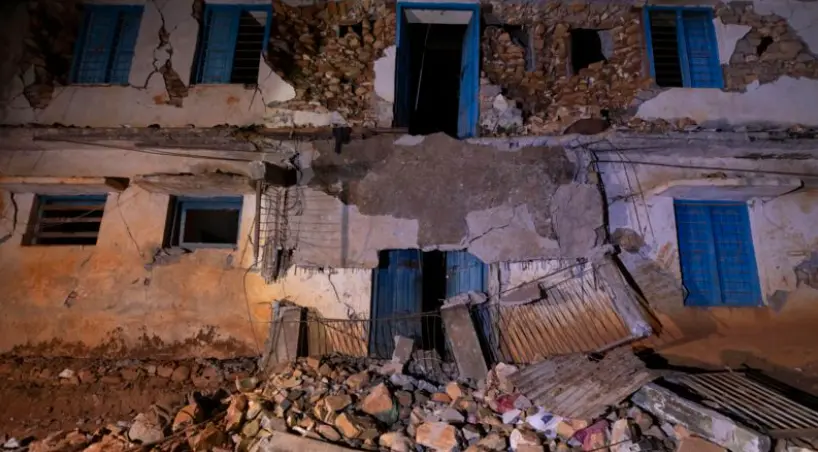Rescue teams saved Geethakumari Bista’s eldest daughter, but were unable to rescue her youngest daughter, 14, who died after her house collapsed and she was trapped in the rubble.
“People were screaming all around. The police arrived and I shouted, ‘I’m alive too.’ First they rescued my eldest daughter, pulled her out and took her to the first floor. Unfortunately, they couldn’t save the little girl,” Bista told.
More than 150 people were killed after an earthquake struck western Nepal on Friday.
Security forces were deployed in Jajarkot and West Rukum, 500 km west of Kathmandu, the country’s capital, to assist in rescue efforts.
The government estimates that some 375 people have been injured. The hospital in Jajarkot is full of injured, while some people in delicate condition have had to be flown by helicopter to Kathmandu.
An hour after the earthquake, three more tremors were felt.
Local authorities urged people to stay outdoors for at least 24 hours, as small aftershocks are being recorded in the area.
International aid
Nepal’s Prime Minister Pushpa Kamal Dahal arrived Saturday in the affected region after expressing his “deep regret” over the loss of life caused by the earthquake.
Countries such as China and India, Nepal’s neighbors, have offered humanitarian aid. Authorities expect to meet this Sunday to decide whether to accept foreign aid to support rescue operations.
Search and rescue operations are being hampered by blocked roads due to landslides caused by the quake.
“Houses have collapsed. People have run out of their homes. I have come out among the crowd of terrified residents,” said a police official in the region, Santosh Rokka, who spoke to Reuters immediately after the quake.
“We were sleeping. We felt like dying,” said Laxman Pun, another of the people who survived the natural disaster. “We don’t know where we will be able to stay. We will probably need tents.”
“Our house was shaking back and forth like a swing. When we ran outside, there were houses falling down and dust everywhere. We couldn’t see anything, so we went back inside. We came out when the shaking stopped,” said Siddha Bohora, a bank manager in Jajarkot.
According to the UN Office for the Coordination of Humanitarian Affairs, access to Jajarkot is obstructed by landslides caused by the earthquake.
Earthquake-prone terrain
The quake was recorded at 23:47 local time, according to the Nepal Monitoring and Research Center.
Nepal is located along the Himalayas, which is a terrain prone to seismic activity.
Last month, a magnitude 6.3 earthquake was recorded in the western Bajhang district, injuring several people.
In 2015, the country suffered two devastating earthquakes in which 9,000 people were killed and 22,309 injured.
The first, on April 25, 2015, was a magnitude 7.8 earthquake that caused most of the damage and loss of life. It was followed by a large number of aftershocks, including one of 7.3 in May of that year.
The quakes destroyed or damaged more than 800,000 homes, mainly in the western and central districts, according to the International Federation of Red Cross and Red Crescent Societies (IFRC).
Government buildings, sections of roads and the famous historic monuments of the Kathmandu Valley – a Unesco World Heritage Site – were destroyed or damaged, and many villages north of Kathmandu were flattened.

